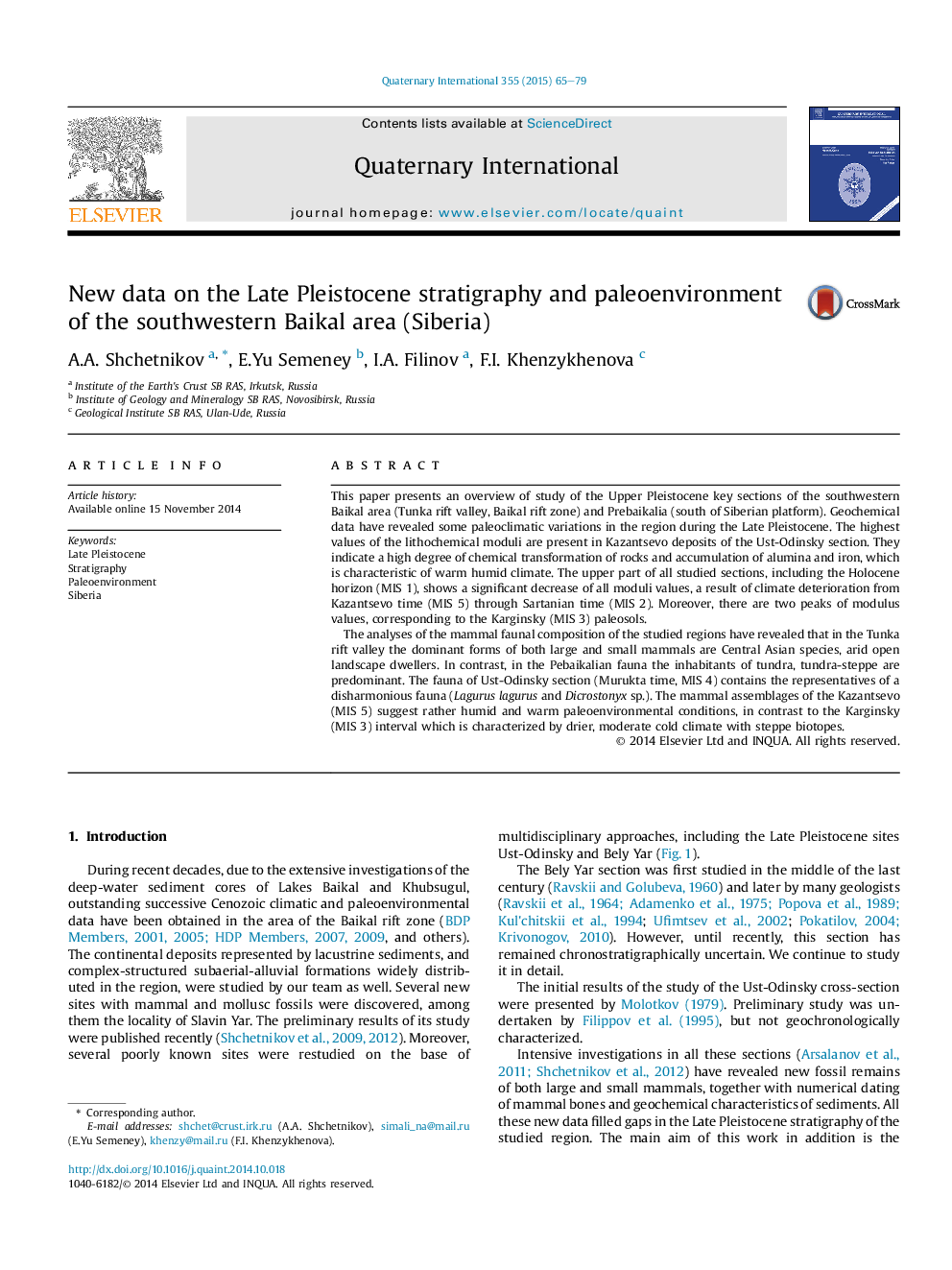| Article ID | Journal | Published Year | Pages | File Type |
|---|---|---|---|---|
| 1041059 | Quaternary International | 2015 | 15 Pages |
This paper presents an overview of study of the Upper Pleistocene key sections of the southwestern Baikal area (Tunka rift valley, Baikal rift zone) and Prebaikalia (south of Siberian platform). Geochemical data have revealed some paleoclimatic variations in the region during the Late Pleistocene. The highest values of the lithochemical moduli are present in Kazantsevo deposits of the Ust-Odinsky section. They indicate a high degree of chemical transformation of rocks and accumulation of alumina and iron, which is characteristic of warm humid climate. The upper part of all studied sections, including the Holocene horizon (MIS 1), shows a significant decrease of all moduli values, a result of climate deterioration from Kazantsevo time (MIS 5) through Sartanian time (MIS 2). Moreover, there are two peaks of modulus values, corresponding to the Karginsky (MIS 3) paleosols.The analyses of the mammal faunal composition of the studied regions have revealed that in the Tunka rift valley the dominant forms of both large and small mammals are Central Asian species, arid open landscape dwellers. In contrast, in the Pebaikalian fauna the inhabitants of tundra, tundra-steppe are predominant. The fauna of Ust-Odinsky section (Murukta time, MIS 4) contains the representatives of a disharmonious fauna (Lagurus lagurus and Dicrostonyx sp.). The mammal assemblages of the Kazantsevo (MIS 5) suggest rather humid and warm paleoenvironmental conditions, in contrast to the Karginsky (MIS 3) interval which is characterized by drier, moderate cold climate with steppe biotopes.
